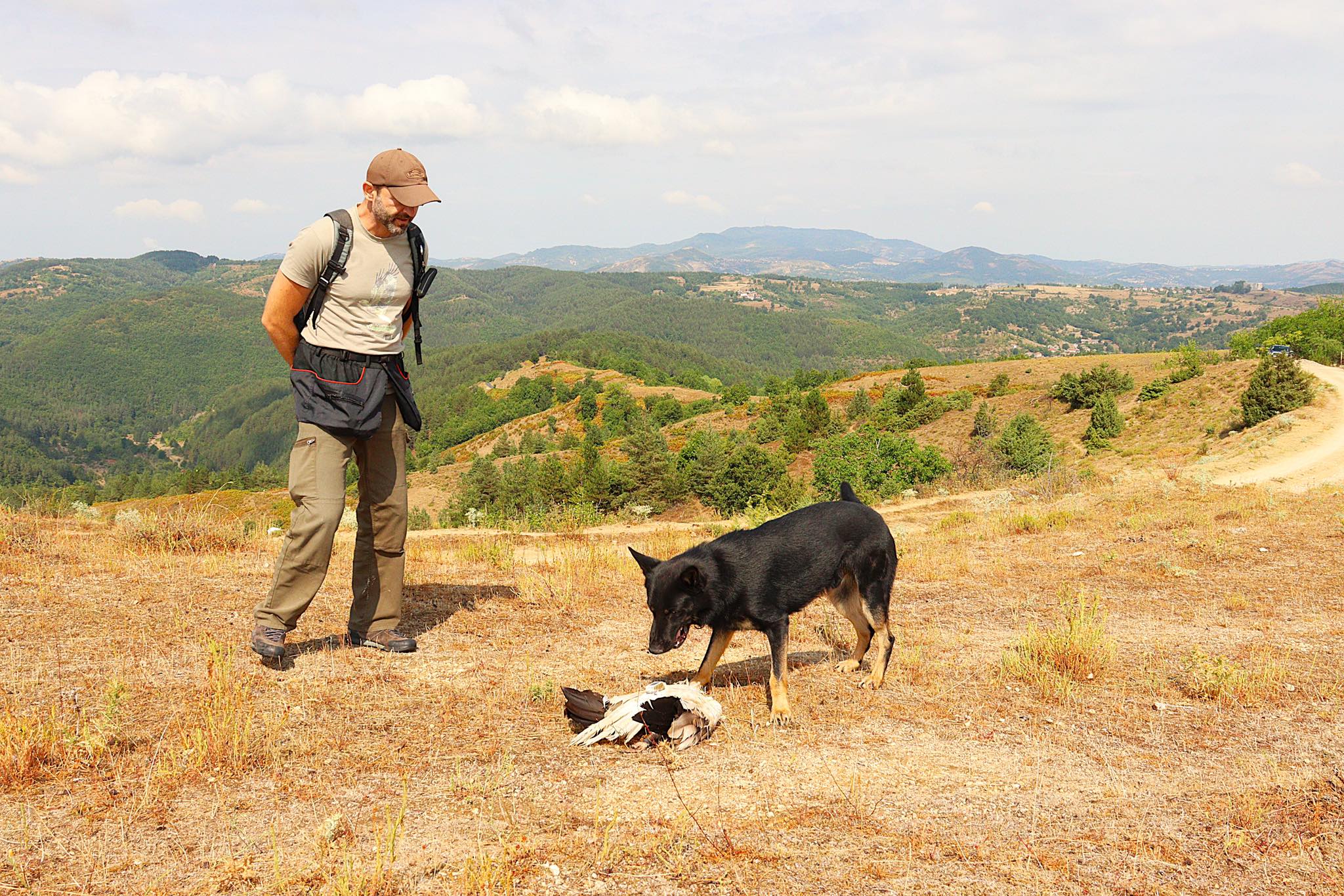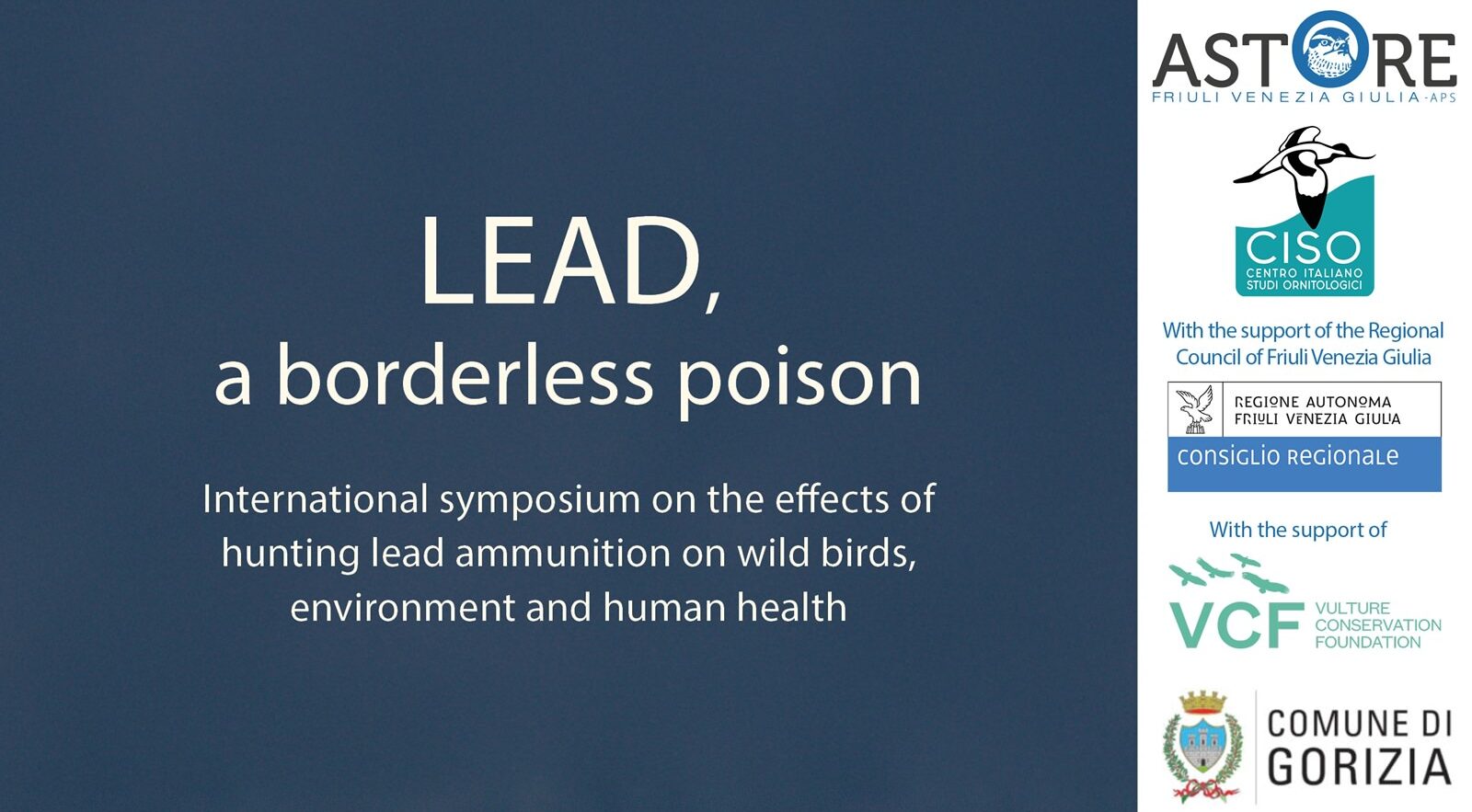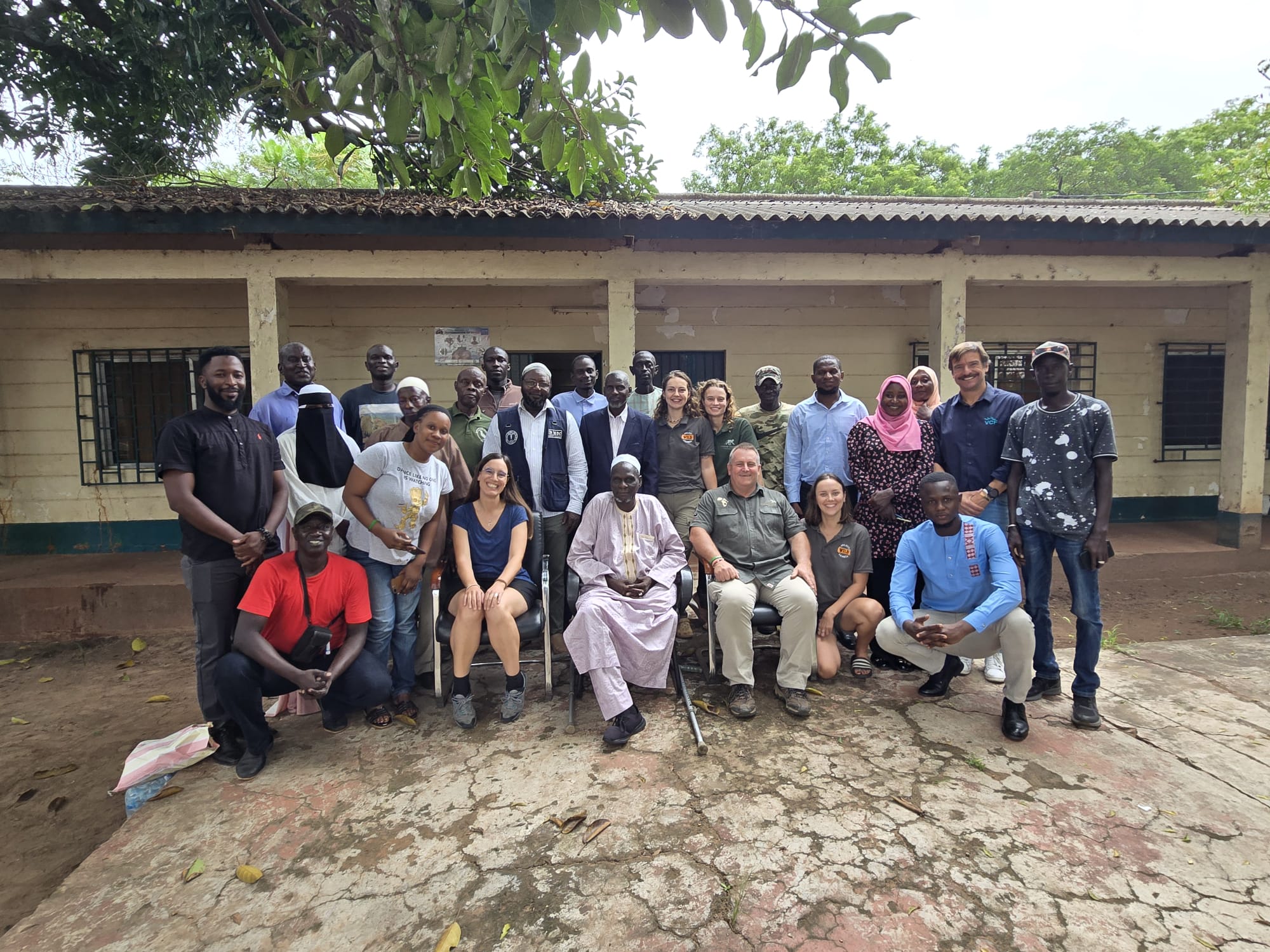Only a few weeks after a shocking vulture mass poisoning incident was identified in the Kruger National Park, another incident was now reported. More than 100 vultures have been found dead in yet another devastating mass poisoning. The incident, confirmed by VulPro and Wild and Free Wildlife Rehabilitation Centre, took place at Lionspruit Game Reserve near Marloth Park, Mpumalanga, just to the south of the Kruger NP. This is an ecological crisis that calls for coordinated conservation actions.
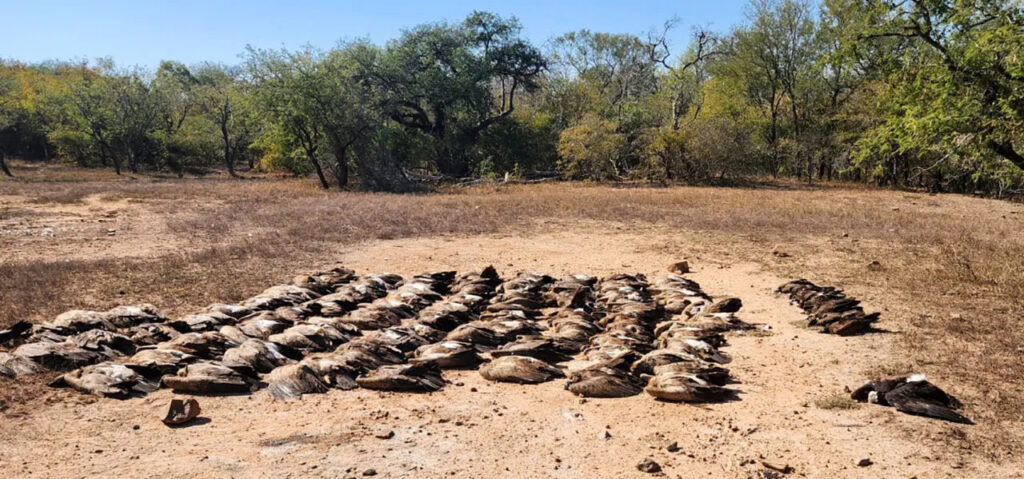
It took only one poisoned warthog carcass to wipe out over a hundred critically endangered vultures in Mpumalanga. The devastating incident was discovered by the VulPro and Wild and Free organization teams, thanks to GPS tracking devices fitted to rehabilitated vultures they had released in the past.
When the GPS devices signalled abnormal birds’ movements, VulPro alerted Wild and Free, who then contacted field rangers from the Nkomazi municipality. The team immediately intervened. What they found was catastrophic: the poisoned carcass had left no survivors. Among the victims were 92 White-backed vultures (Gyps africanus) —90% of them breeding adults—, 9 Hooded vultures (Necrosyrtes monachus) and one adult male White-headed vulture (Trigonoceps occipitalis). All are listed as Critically Endangered on the IUCN Red List of Threatened Species. The teams rule out traditional medicine as a motive, since there were no signs of body parts taken. Thanks to SANParks’ aerial support, two more vulture carcasses were discovered nearby.
Samples have been collected by Dr Gerhard Verdoorn – director of the Griffon Poison Information Centre – and Dr Peet Venter. The goal is to identify the poison used and support legal action.
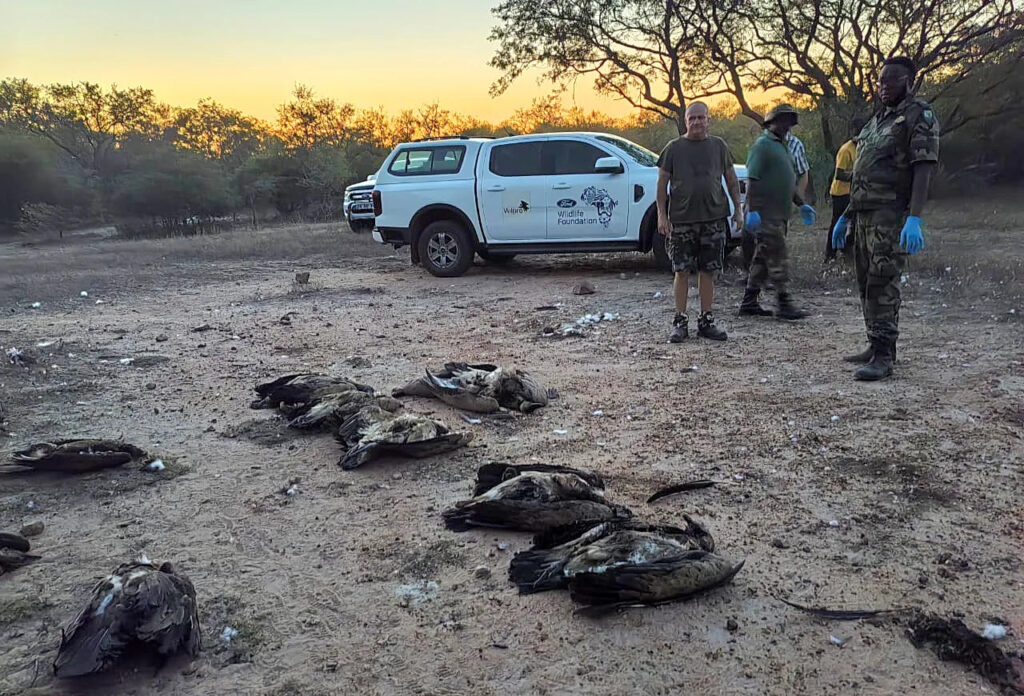
A systemic threat to natural balance
The poisoning of vultures and other wildlife, including lion, leopard and other large carnivores started with a sentinel poisoning incident in September 2015. Sadly, it has continued unabated since, with incidents occurring regularly in the Greater Kruger National Park and with less frequent incidents also being reported from neighbouring Zimbabwe and Mozambique within the Greater Limpopo Trans-frontier Conservation Area (GLTFCA). By early 2025, around 3,000 vultures have been killed. This includes the data from the most recent poisoning incidents.
According to Kerri Wolter, CEO of VulPro, these may not be isolated events, but part of a larger, chilling pattern. This last event is even more destructive, since it happens during the reproductive season and involves mostly breeding adults vultures.
In response to the growing frequency of poisoning cases, VulPro is urging all rehabilitation centres to halt vulture releases in the Lowveld region until threats are understood and mitigated.
Researchers have recorded a decline of more than 50% in the breeding population of all three species of vultures over the last decade. It has become evident that the Kruger National Park in particular has become a sink for these species. The mortalities recorded is likely impacting populations from a much wider catchment from across eastern southern Africa.
We are losing vultures faster than we can save them. Poisoning not only wipes out these critical scavengers, it endangers entire ecosystems and threatens human and wildlife health. It shakes natural balance to its core and undoes decades of dedicated conservation efforts.
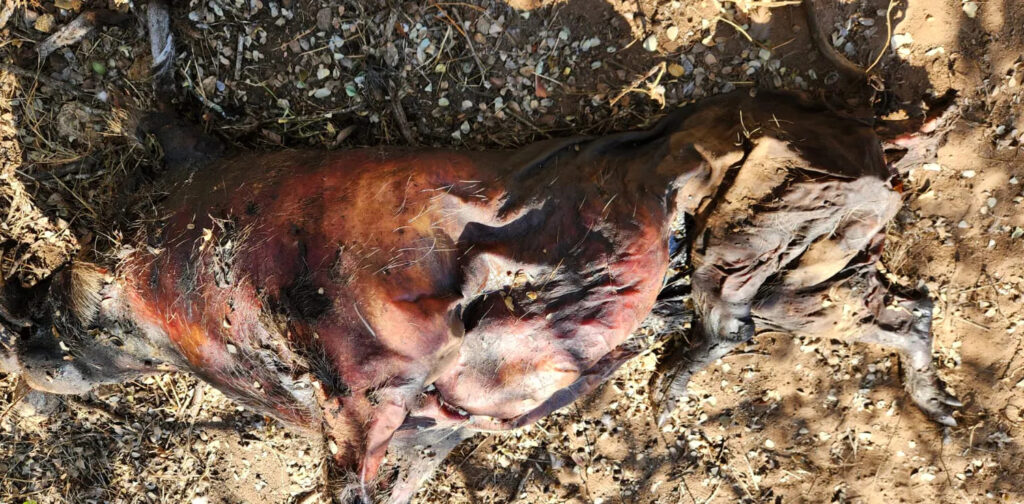
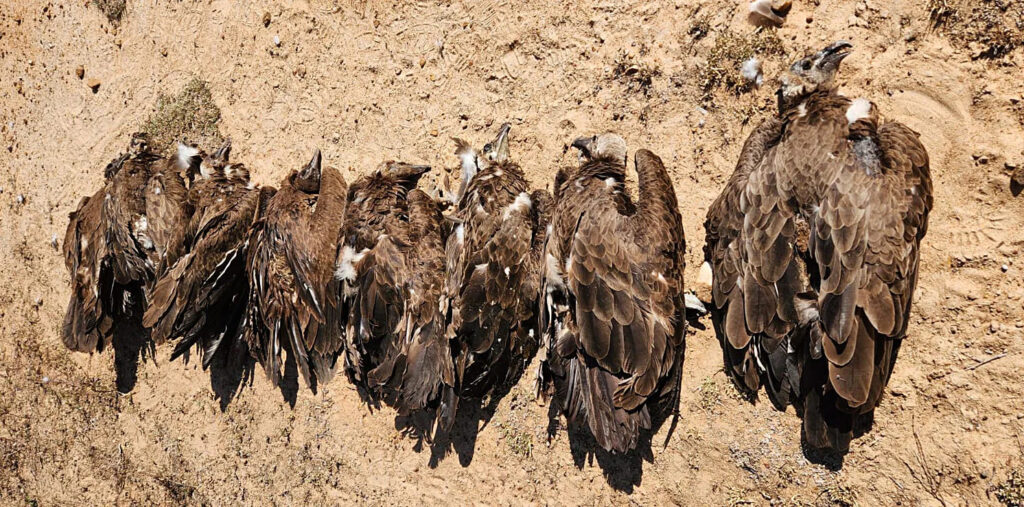
Collaboration is key
Just days before this event, VulPro – one of the few vulture focused conservation organisations in Africa – and Wild and Free – a non-profit organisation focused on mitigating human-wildlife – formalised their long-standing partnership to establish a Vulture Emergency Response Unit in Mpumalanga. The timing is painfully prophetic.
Supported by WeWild Africa and Over and Above Africa, the unit combines:
- Rapid on-site response to poisoning and injury cases
- Expert veterinary care at Wild and Free’s clinic in Hectorspruit
- Long-term rehabilitation and monitored releases through VulPro’s national programme
This collaboration builds a lifeline across provincial boundaries—connecting expertise, conservation strategy, and field operations.
As investigations continue, we extend our deepest thanks to the brave and heartbroken teams who responded swiftly in both these recent poisoning cases and who are now tasked with the emotional and dangerous work of decontaminating the scene—saving other wildlife from secondary poisoning.
This deliberate act has caused irreparable damage to already declining South Africa’s endangered vulture populations. It is a call to action to governments, conservationists and local authorities. Vultures need coordinated conservation actions.
The VCF urges all statutory organisations in South Africa to rapidly set up and implement proactive and reactive systems to effectively curb and reduce the prevalence and impact of wildlife poisoning within their areas of operation.
